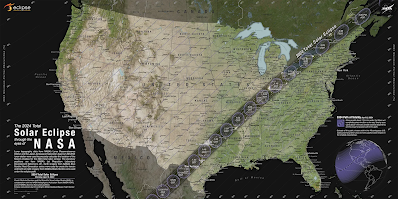Bishop Schneider's Christus Vincit: Uplifting, Indispensable, Timely
Following a week of lamentable meetings by the bishops of the USCCB, it is tempting to lose one’s hope that this Church crisis will ever end. The bishops, many of whom are spiritual offspring of Theodore McCarrick (though not all), discussed a plethora of secularist liberal issues such as gun control and diocesan taxes, all the while mingling behind the security-laden walls of the four-star Marriott Waterfront hotel in Baltimore - not exactly a Carthusian monastery. The most accurate description of the meetings perhaps came the week prior, as a Crux headline read: US Bishops have their plates full during next week’s USCCB meeting. No doubt their wine glasses as well. In the meantime, trust in the American bishops to act as defenders of the Catholic faith has long since dissipated, though it seems many bishops are tone-deaf to this reality.
Now would be an appropriate time to suggest that faithful Catholics are not entirely orphans, that there is a glimmer of hope. I speak of the recently released book, Christus Vincit: Christ’s Triumph Over the Darkness of the Age – Bishop Athanasius Schneider in conversation with journalist Diane Montagna.
I had initial hesitation reading Christus Vincit. Personally, I dislike books that are formatted as interviews; such is Christus Vincit. However, this hesitation soon evaporated. Montagna and Bishop Schneider collaborate to offer an exemplary book – smooth, eloquent, and in-depth. Indeed, it is unlikely I will ever meet Bishop Schneider, and improbable I will speak at length with him. This book gives the impression of the improbable becoming a reality. It is approachable, smooth, and profound. Montagna is to be commended for her successful work.
To the actual book, Christus Vincit begins with a section on Schneider’s life and background. I found this helpful. As Schneider continues to gain prominence, or infamy, as a key player in the Catholic counter-revolution, it is valuable to learn more about the actual man.
Many stirring must-read stories were shared of Schneider’s early years in Kazakhstan. He comes from a very devout family, and was baptized three times (not really!). Due to Communist persecution, he would sometimes go over one year without attending Mass. As he got older, his family would travel a full day to attend Sunday Mass. I personally found these stories compelling, for I often complain about having to spend an entire Sunday to take my family to a reverent Mass. It seems that things turned out favorably for the Schneiders, and perhaps there is hope for my family as well.
As his personal biography is laid forth for readers, it is striking to see Schneider’s abandonment to God’s plan for his life. For instance, his religious name, Athanasius, was quite providentially chosen for him. As was his area of academic specialization: Patristics. When Schneider was chosen to become an auxiliary bishop he was deeply saddened, but didn’t decline the selection when he found out that Pope Benedict XVI personally chose him to the ecclesial office.
Following the introduction on the life of Bishop Schneider, an expansive array of subjects are then broached, such as the death penalty, contraception, China, charismatics, reverence, McCarrick, angels, Amoris Laetitia, Fatima, and more. The book at times teaches like a catechism, yet a perennial catechism that does not change with the whims of a pope. Each and every issue discussed is explained clearly, and is of great interest.
The gloves come off early, so to speak, when the book turns to the topic of Islam and Pope Francis’ Evangelii Gaudium. The juxtaposition of Montagna presenting Pope Francis’ writings on diverse religions, and Schneider’s clear presentation of the Catholic faith, is salient. As Schneider explains the importance of Catholicism as the one true religion, and passionately dissects the arguments of those who champion false ecumenism, it is easy to see why Schneider refuses to let Pope Francis get away with the Abu Dhabi document’s claim that God wills a diversity of religions. Schneider is fierce when it comes to defending Catholicism.
As the book moves forward, Bishop Schneider’s thoughts on Vatican II are especially noteworthy, and I found balanced (though it can be argued that being “balanced” is not always the correct position). Schneider explains the problems with the Council, even going so far as to say that the current pontificate “is a logical consequence of the so-called ‘spirit of the Council’ and of the ambiguous elements in some of the Council texts” (p. 141). Schneider, while reminding readers that Vatican II is pastoral and not dogmatic, states that there are troubles with certain texts that need explanation, “or even amendments and corrections” (p. 123). Some might disagree with Schneider on this point, and say it is best to simply abrogate the entire Council. Still, it is refreshing to have a bishop examine the Council candidly and authentically.
On another point, Montagna asks Schneider if the Society of St. Pius X will ever come into full communion with Rome. He responds, “‘Full communion’ is not the correct expression in my view. They are already in communion with the Church, since they recognize the pope, mention him in the Canon, pray for him publicly, and pray for the local diocesan bishop. […] Regularized, that is better” (p. 149). A stimulating discussion ensues from this, including Schneider’s thoughts on Archbishop Lefebvre.
Regarding Fatima, a timely topic for today, Bishop Schneider presents a spiritual explanation of the third secret, such as the “big city half in ruins” being a symbol of the Church (he admits the third secret may be missing a written explanation from Our Lady). I leave it to Fatima experts to weigh in on his description of the secret, but I found it very enlightening nonetheless.
Perhaps the one critique of the book I have involves Schneider’s thoughts on the Novus Ordo Mass. He suggests, with an air of regret, that it seems improbable that the Novus Ordo Mass could ever be removed. Therefore, he argues for a step-by-step change in the Novus Ordo Mass so that it closer resembles the traditional Latin Mass. For instance, he argues the Novus Ordo Mass should eventually adopt the old calendar, readings, and so on. As I personally note the tremendous growth in the traditional Latin Mass, I see this issue differently. I have hope that the traditional Latin Mass be the Mass that Catholics increasingly turn towards, rather than simply working towards fixing the Novus Ordo Mass - a fix that perhaps would not adequately address the entire Novus Ordo paradigm. Ultimately only time will tell.
A general point evident throughout the book is that Bishop Schneider is not a punching bag for liberals to beat upon. At one point Montagna asks him about the strife he receives from various bishops. For instance, once Schneider was prohibited from saying a Pontifical Mass in a German diocese. The Vicar General wrote to the priest in charge and stated, “No, the diocese cannot give permission to Bishop Schneider to celebrate a Pontifical Mass because his presence causes division and tension. […] Dear Fr. Rector, in the future please invite to the shrine only bishops who are strong in faith.” Schneider replies ardently to this claim: “Strong in which faith? Perhaps the Protestant faith of this Vicar General? Surely not in the Catholic faith” (p. 45).
Also apparent in the book, and a fitting point to examine, is how Bishop Schneider, as a true shepherd, identifies with his Catholic flock. For instance, in regards to bishop meetings (such as the recent USCCB meetings), he explains, “To be honest, I am bored with episcopal meetings and synods. […] They are often sterile and give the impression of an enormous show of clerical vanity” (p. 113). For him, such meetings are a sign of a loss of supernatural faith, a faith all Catholic bishops expected to emanate. To illustrate, Schneider explains that once, following a beautiful Pontifical Mass, there was a picture-taking session. In one picture he was standing with a sharp looking altar boy of nine or so. Schneider relates, “Everyone took photos. Then from the crowd several parishioners shouted to the boy, ‘You will become a bishop!’ And he [the boy] was so serious and said, ‘I want to become a saint!’ […] One could have the impression that he contrasted being a saint with being a bishop!” (p. 114). Indeed, Bishop Schneider sees how the office of bishop does not guarantee staying faithful to Christ. The position is not something to boast in, but rather is burdensome.
There are so many more words that could be spoken regarding Christus Vincit. I will simply end by saying that, though it is difficult for lay people to know which current books to invest time in, Christus Vincit is a must read. It is a book for the laity who sit by with despondent anger and watch dreary USCCB meetings. It is for families in need of assurance that true Catholicism is still possible. It is for men, and boys parading as men, who need to be challenged to take on the yolk of Christ. It is for academics unfamiliar with pre-Conciliar Church teachings, once called the Catholic Faith. It is for priests, especially the ones ministering in a spirit of fear caused by their bishops. And this book is for bishops, all bishops, be they seemingly lost, obsessed with power and prestige, timidly silent, uneducated, worldly, or even, deep down, intimidated by a lowly auxiliary bishop from Kazakhstan. For this book can be summed up in two words: daring clarity.
May this book be so for the Church, and all Her faithful.







Comments
Post a Comment